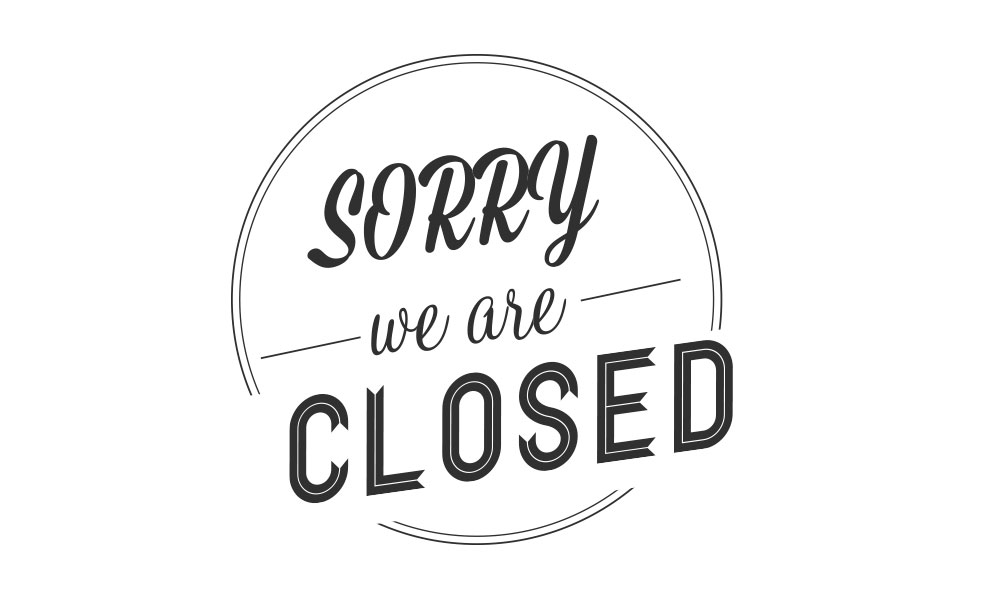Is Your Course Closed? Here’s What You Can Be Doing Now


sorry we are closed
Open. Closed. Reopened. Open but socially distanced. The status of golf course operations has changed day by day during the COVID-19 pandemic, sometimes hour by hour. All the while, the turf and the weeds continue to grow.
When life returns t o “business as usual,” many types of services will be able to switch on the lights, call their employees in, restock their shelves, and then get back to work. But golf doesn’t operate that way. You cannot walk away from a course and expect to return weeks or months later, get out the mowers and pick up where you left off.
Mindful of the challenges that lie ahead, even the most stoic golf course superintendents could find the adage, “lose your greens, lose your job,” creeping into their thoughts, like goosegrass on a near-perfect bermudagrass green. On the other hand, superintendents and their crews are not your average folks. From gophers to army worms and floods to fires, golf course maintenance staff routinely face challenges that would stop other businesspeople in their tracks.
Essential to getting your turf and your team through these bizarre times is your awareness that the operational status of your course can change abruptly. Whether your course is currently closed or open with safe practices in place, plan your activities as though that status may be reversed by the time you roll out of bed tomorrow.
Although there are no “one size fits all” solutions, this article outlines a few of the steps you and your crew can be taking to make life easier now and your much-anticipated reopening ramp up less stressful.
Putting the Brakes on Where You Can
At most golf facilities, spring is an inopportune time to be dialing back maintenance. In a ‘normal’ year, this is the season when golf courses typically demand a lot of attention. But if you’re operating on staggered shifts, running a skeleton crew or perhaps doing both, you’ve had no choice but to become highly creative in your course maintenance.
The following suggestions will help you reduce your workload as much as realistically possible:
- Your immediate goal is to keep course conditions adequate, which does not mean showcase condition. Strive to maintain sufficiently healthy turf so that when life finally gets back to normal, you and your crew can efficiently restore playing conditions.
- Irrigate less to slow growth. Give your turf only the amount of irrigation it needs to remain dense and healthy.
- Consider applying plant growth regulators (PGRs). You may already use PGRs to improve playing conditions, thereby keeping club members and frequent golfers happy. Reevaluate the products and the application frequency you currently use, focusing instead on PGRs for suppressing or regulating growth.
- Investigate the use of product combos to improve irrigation efficiency. Arising out of the drought conditions that plagued parts of the country for multiple seasons are established practices that combine PGRs, soil surfactants (wetting agents) and sufficient nitrogen fertilization to improve water conservation effectively on fairways. For more drought-driven, maintenance-reducing ingenuity, read “Maintenance Up the Middle,” by Chris Hartwinger, Senior Agronomist, USGA Green Section.
- Get comfortable with raising your mowing heights and reducing mowing frequency. Golf Course Superintendents Association of America (GCSAA) has recommended that you mow greens only two to three times per week and tees, fairways, collars, approaches, and driving range tees and targets and roughs only one or two times every two weeks.
- Remove nonessentials, such as benches, ball washers and other course fixtures that require maintenance or encourage socializing if your course is open.
Maintenance Tasks You Cannot Skip - Although you can, and should, cut back on frequency, you can’t stop mowing your golf course. A triplex or other wide area mower can cover a lot of territory efficiently.
- Fungicide applications are also necessary. From dollar spot to snow mold, fungal pathogens are not in quarantine and are not socially distancing themselves from your turf. Golf course superintendents cannot afford to tap the brakes on fungicide applications.
- Maintain your bunkers. Without your intervention, weeds win every battle and every war.
- Stay in touch. Your vendor reps and the regional agronomists at the USGA are only a few of the many experts who stand ready to offer, at no fee, their professional insights as you adjust your course maintenance plans. In many cases, you can take advantage of support through virtual meetings during which reps will be able to diagnose problems and offer on-the-spot suggestions.
Safety for Your Crew
Until now, on-the-job safety has never necessitated that you deal with a highly contagious, potentially life-threatening virus. In addition to the other new health and safety routines you have already implemented, consider adding these steps to your workplace protocols.
- Teach your crew how to wash their hands with a step-by-step demonstration. Because handwashing instructions are available almost everywhere, people are tuning out this information. Try modeling legendary basketball coach, John Wooden, who started each basketball season demonstrating to his superstars the proper way to put on socks and shoes.
- Assign specific pieces of equipment to individual crewmembers to reduce exposure.
- Use the fewest workers necessary to execute each task, a good practice under any circumstances.
- Some golf courses have reassigned proshop staff, kitchen staff and others to work as part of the course maintenance crew. This reassignment is an exemplary way to keep employees on the job, fulfilling roles that would normally go to seasonal workers. However, if you suddenly find the clubhouse bartender working as part of your crew, remember he or she will likely need extra supervision and support to carry out this new, albeit temporary, role.
Who Has Downtime?
If you find that you or your crew has spare time on your hands, here are recommendations for getting value out of those extra hours.
- Start a new routine of connecting with others in your profession via Golf Course Trades. Send us your news items, full-length articles, announcements, shoutouts and snippets. Don’t forget to include photos. We love sharing pics of your course, your crew, your projects, your family and even your pets (we love it when you share photos of your pets!) Email us at Golf@TheTrades.com.
- If you use social media, share positive messages about your facility and photos that will help your club members and golfing community feel connected to each other and their course. If you don’t use social media, consider this a great time to get started.
- Inventory chemicals on hand and, if budgeting permits, order more than you typically keep in house. In addition to covering your needs during slower shipping and delivery times, your stash of extra chemicals may be just what you need to turn your course around quickly when it reopens.
- Inventory equipment, noting needed repairs and replacements. Use this time, if possible, to make repairs, arrange for work to be done or select and order new equipment.
- Take advantage of and encourage your staff to also sign up for the many webinars, training and educational programs presently available online. Typically, these programs are offered at no cost, including some programs that award CEUs.
Connect with Your Tribe
The World Golf Foundation and the We Are Golf Coalition are two of golf’s many dedicated advocates. They, along with other associations, have effected meaningful changes that help regulatory agencies and political decisionmakers understand that golf courses can operate effectively while practicing social distancing. In many cases, your association lobbyists have been directly responsible for informing and inspiring government leaders to walk back a decision to close a course. You are not in this alone. Join with other superintendents and golf industry professionals to ensure that your voice is heard.
Above all else, focus on family, your own, and your crew-family. Pay attention to what is said and what is left unsaid as you tune in to needs within your home and the homes of your crew and others who work at your course. As much as we value it, grass is just grass. People are a natural resource that matters most.
Linda Parker has been writing professionally since the 1980s. With clients in finance, sports, technology, change enablement, resorts and nonprofit global initiatives, Linda helps organizations communicate their stories in meaningful ways to the people they most want to reach. She has authored, ghostwritten or contributed to more than a dozen nonfiction books. Linda is a member of the Authors Guild and the Golf Writers Association of America. You can connect with her at linda@glindacreative.com
Recent Posts
Circling Raven Named Idaho’s Top Public Course by GOLF Magazine
The ratings are in and expert panelists for GOLF Magazine (golf.com) rank Circling Raven Golf…
Q&A with a Multi-talented Golf Course Architect – Part 1: Making the Rounds – Installment 38
This column features recollections of the author’s 37 years as a golf writer. These installments…
Sir Nick Faldo and Himalayas Golf Launch ‘Golf in Small Spaces’ to Redefine Where the Game is Played
Golf is evolving, and Sir Nick Faldo is helping lead the charge. The six-time major…
Mark McCarel Joins EnP as Northeast Territory Sales Manager
Specialty fertilizer manufacturer EnP Investments is proud to welcome Mark McCarel as their Northeast Territory…
Heathrow Legacy Country Club’s Fazio Course Earns Audubon International Signature Sanctuary Certification
Audubon International—an environmentally focused non-profit organization offering members numerous certifications and conservation initiatives to protect…
South Carolina State Leaders Honor Green’s Superintendent Career
South Carolina’s House of Representatives today honored the career of golf course superintendent Chuck Green.…


